Sydney Opera House: The Sources of Inspiration
An icon for Sydney, New South Wales and Australia, designed by a young Danish Architect in the 1950's This is a summary of the inspiration for the design. Odyssey Traveller is an Antipodean travel company serving World Travellers since 1983 with small group educational tours for senior couples and mature solo travellers.
25 Oct 22 · 11 mins read

Sydney Opera House Design
The iconic Sydney Opera House is one of the great buildings of the 20th century. The World Heritage-listed building is an image of great beauty – a masterpiece or architecture that is known throughout the world. For decades, ideas had floated around to build a dedicated performing arts centre in Sydney, but not until the mid-1950s was there enough political traction for this to become a reality. At this point, Australia was in the midst of a major transformation, with its economy expanding rapidly in the context of unprecedented levels of post-WWII immigration from Europe. It was an optimistic nation looking to define itself.
The architect of Sydney Opera House, a Danish man named Jørn Utzon, was relatively unknown when he won the international competition to design the national opera house at Sydney’s Bennelong Point. Inspired by natural and architectural forms from Denmark, Mexico, China, the Mediterranean, Persia, Morocco and more, his sculptural, carved design was a radical break from the cube and rectangular shapes of modernist architecture. Although not without some controversy at first, the design is now widely recognised as one of creative genius, with the building standing proudly as a symbol for not only a city, but a whole country and continent.
This article explores how Sydney Opera House came to be. It looks at the competition to design the Sydney Opera House, Utzon’s inspirations, and the controversies generated by his radical design. It is intended as background reading for Odyssey Traveller’s small group tours to New South Wales for senior and mature travellers. Much of the information has been sourced from Peter Fitzsimons’s The Opera House, as well as Peter Murray’s The Saga of the Opera House.
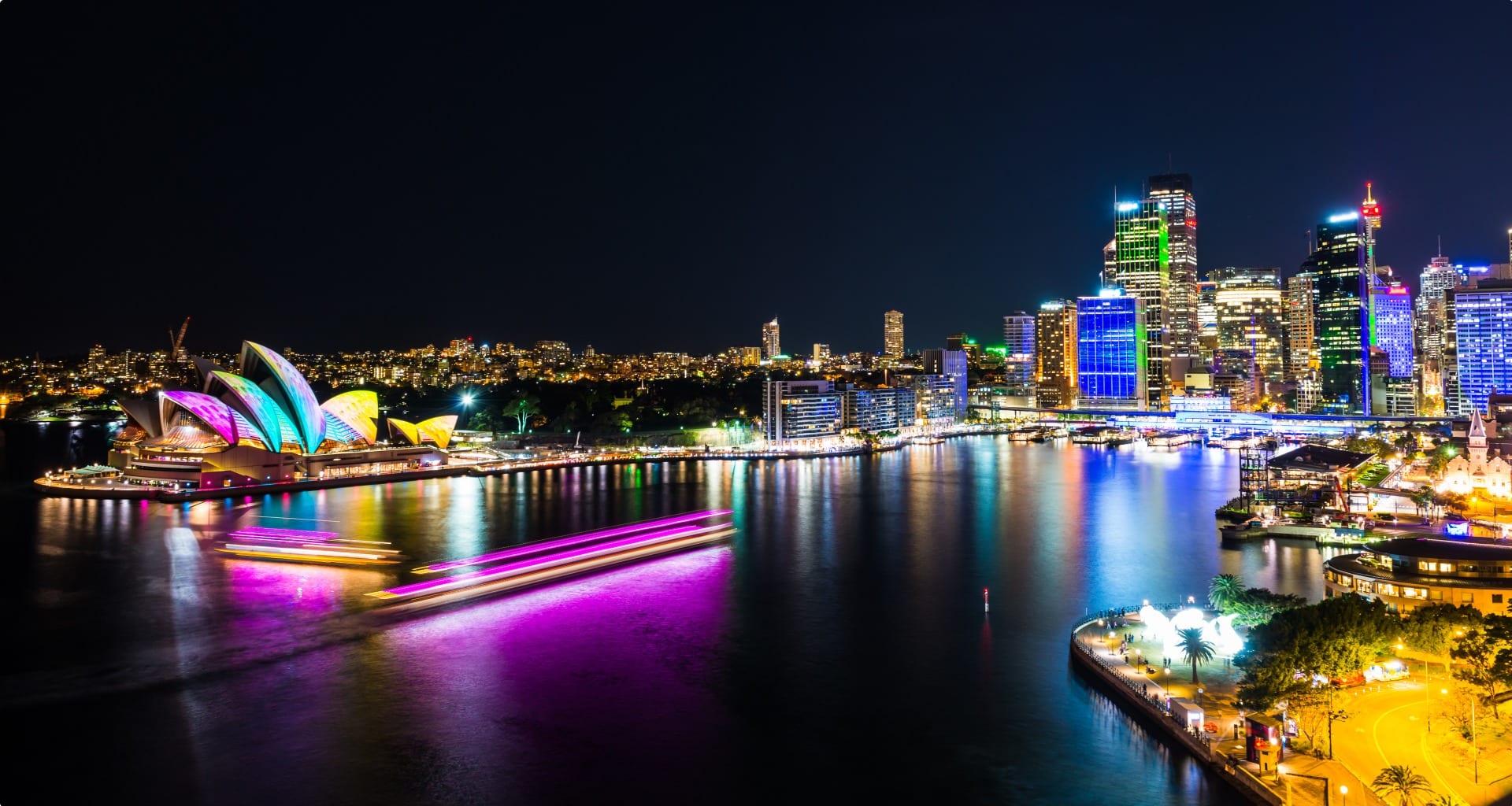
The Competition to Design the Sydney Opera House
In 1955, it was decided that Bennelong Point would be the site for the new national opera house in Sydney. But the building still needed to be designed. To find the best option, the New South Wales premier, Joe Cahill, announced an international competition on 15 February 1956. Guidelines for the competition were set out in a 25-page booklet known as the Brown Book, containing black and white photos of Bennelong Point.
The building was to be one devoted to the arts, taking pride in its location in the centre of Sydney on a flat piece of land jutting out into a beautiful harbour with no other buildings nearby. This was rare for the architect; it meant near total artistic freedom. Whatever building he would come up with would not have to fit in with nearby structures. It could be a new start on urban land reflecting only the superb natural world surrounding it. The possibilities were endless.
In all, there was an enormous show of interest. More than 200 entries came flowing into Sydney from all over the world. Design number 218 belonged to Jørn Utzon. He had been transfixed from the start. Treating the Brown Book like a holy sculpture, he leafed through it every chance he could get. Staring adoringly at the photographs of Bennelong Point, he absorbed the space, trying to squeeze the feeling of it. Eventually, he would come up with twelve drawings, which he sent to Sydney just before the competition closed in December.
No precise record remains of how the winning design was chosen. One story goes that the judge on the panel responsible for choosing it was the renowned Finnish American architect Eero Saarinen. Having missed the beginning of the ten days set aside for judging, Saarinen was disappointed with the 10 finalists the other judges had short-listed. So, instead he flipped through the rejection pile until he came across Utzon’s entry. Instantly, the sheer out-of-this-world imagination of the design took his breath away. It was a work of genius. Holding up the plans so the other judges could see it more clearly for their second look, he said dramatically, “Gentlemen, here is your opera house!”
It’s not known if this story is really true, but regardless Saarinen held a key influence in the panel’s selection. On 29 January 1957, it was announced that the winner of the competition was in fact Design 218 by the hitherto unknown 38-year old Danish architect Jørn Utzon.

Inspirations for Architect Jørn Utzon’s Opera House
Sydney Harbour & The Sea
A wide range of influences inspired Ultzon’s design. First of all, he set out to find everything he could about Sydney, about its people, and about Bennelong Point. He wanted his building to look as if it grew naturally from the location, complementing the light and textures that surround it. He carefully studied all relevant Australian literature he could lay his hands on, as well as nautical charts of Sydney Harbour he found in a marine bookstore in Copenhagen.
With this he was able to gauge the scale of the site and its surrounds, the height of the Harbour Bridge’s arc, and the distance from Bennelong Point to the opposite shore of the harbour and all surrounding points. But most importantly he was also able gain a sense of feel for the place. A man who was reared by a fjord, Utzon immediately recognises Sydney Harbour as precisely that – a small fjord that is the beating heart of Sydney city.
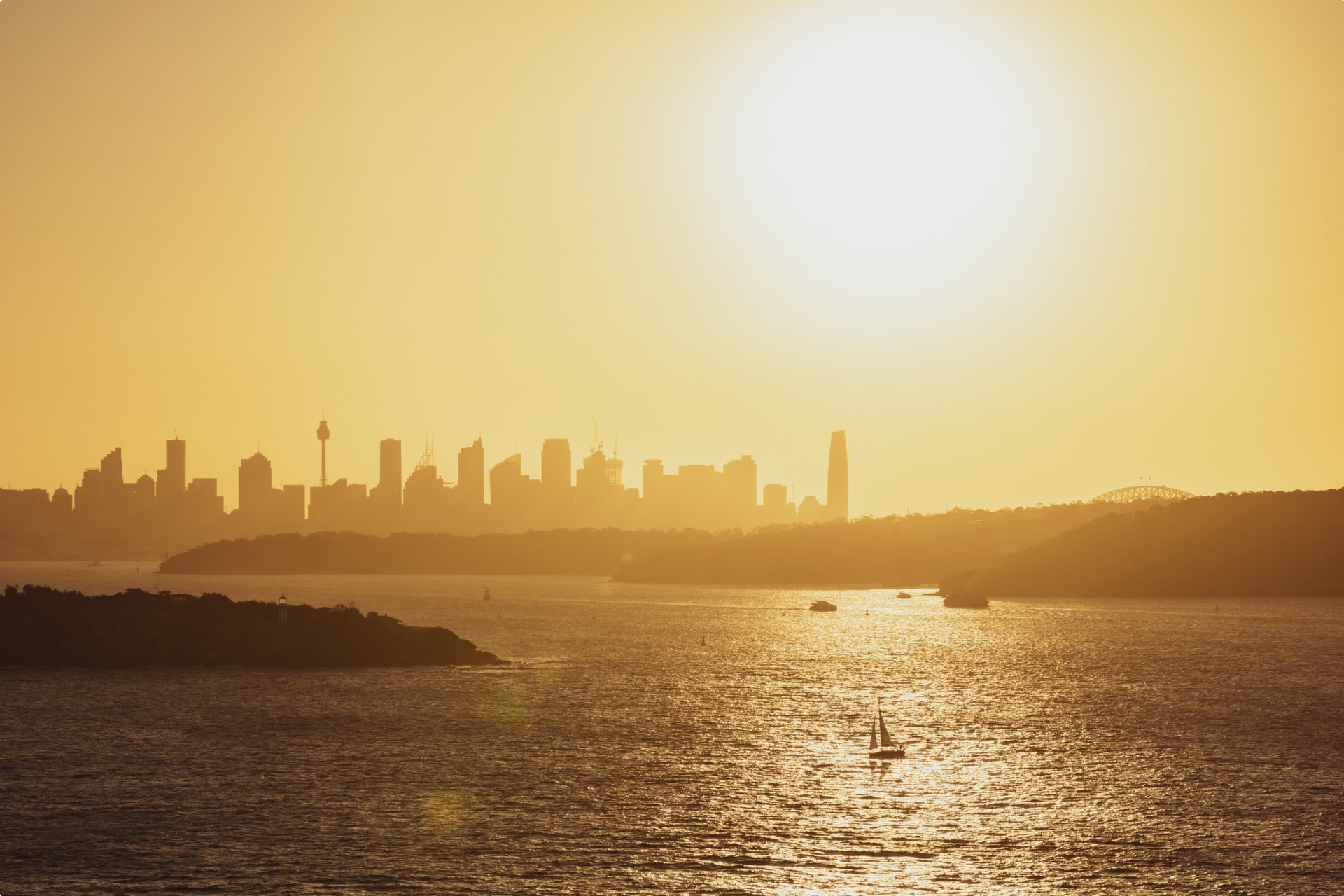
By coincidence, while in Copenhagen, Utzon met a group of young Australian women from Sydney. He listened closely as they exulted about Circular Quay and the old quarter, ‘The Rocks’, nestled under the south end of the Harbour Bridge. Eagerly they talked on about the beauty of the harbour itself, with fairies and sailboats and ships constantly criss-crossing. And there, as they fondly recounted, right by the booming city centre with its high buildings, just down from Government House and the wonderful Botanic Gardens, is Bennelong Point, sitting in the centre of it all.
In all, Utzon gets a strong impression of a city just coming into itself, a place still young and adventurous. It was a place ready for something daring. Of the site itself, he comes to understand it almost as a stage in the harbour, a significant open space in the centre of the city, which can be seen from all around.
Utzon would draw inspiration from one feature in particular – the sandstone heads at the entrance to Sydney Harbour. Sloping upwards to The Gap, the heads then drop abruptly to the sea. “The same feature is often seen in Denmark, on a smaller scale, where you walk uphill as you approach the sea to the edge of an escarpment falling away to the beach and sea below,” Utzon later reflected. “As you approach the edge you look up into the empty sky and only at the very last moment are you able to get a magnificent view of the sea.”

It’s the phenomenon that Utzon would replicate. He would place the entrance to the building atop a high platform, so that theatregoers would climb to be slowly revealed to the magnificence of the entre site. The sights of the harbour would appear all around them – the sea, the sky, the bridge, the city, the harbour with all its coves and inlets – just the way the mighty sandstone cliffs that guard the city do at the very last second.
Utzon was also influenced by his close relationship with the sea. His home and studio at Hellebaek overlooked the Øresund, the strip of water that separates Denmark and Sweden, and he was a keen sailor. He would regularly take his small sailing boat for jaunts on the Øresund around the small peninsula jutting into it – just like Bennelong Point. This was useful, for upon it sits the castle of Kronberg at Elsinore (the basis for Shakespeare’s Hamlet), which helped Utzon imagine how a Sydney Opera House might look rising out of a horizontal plane and soaring skywards.
Mayan and Aztec Architecture
For the building’s foundation, its concrete podium, Utzon drew inspiration from his travels in Central America in the 1940’s. During this time, he had been deeply impressed by the platform ruins of the Mayan and Aztec temples in Mexico.
“I fell in love with [such bases],” Utzon later wrote of that study trip, ‘where I found many variations, both in size and idea, of the platform, and where many of the platforms are alone without anything but the surrounding nature. All the platforms in Mexico were positioned and formed with great sensitivity to the natural surroundings and always with a profound underlying idea. A great strength radiates from them. The feeling under your feet is the same as the firmness you experience when standing on a large rock.’
For inspiration, consulted specific photos from his travels of the pyramids of the Yucatan and the temple of Monte Alban in Oaxaca, which have a series of terraces joined by wide, grand staircases. These would be a great influence on Utzon as he imagined Sydneysiders like the jungle-dwelling Mayans of the Yucatan, climbing up to enormous stone platforms rising out of the dark jungle. As they climbed the steps of the Opera House, people would be lifted above their daily lives to a transcendent other world. The idea was that here, elevated from their normal worlds, they would experience higher culture.
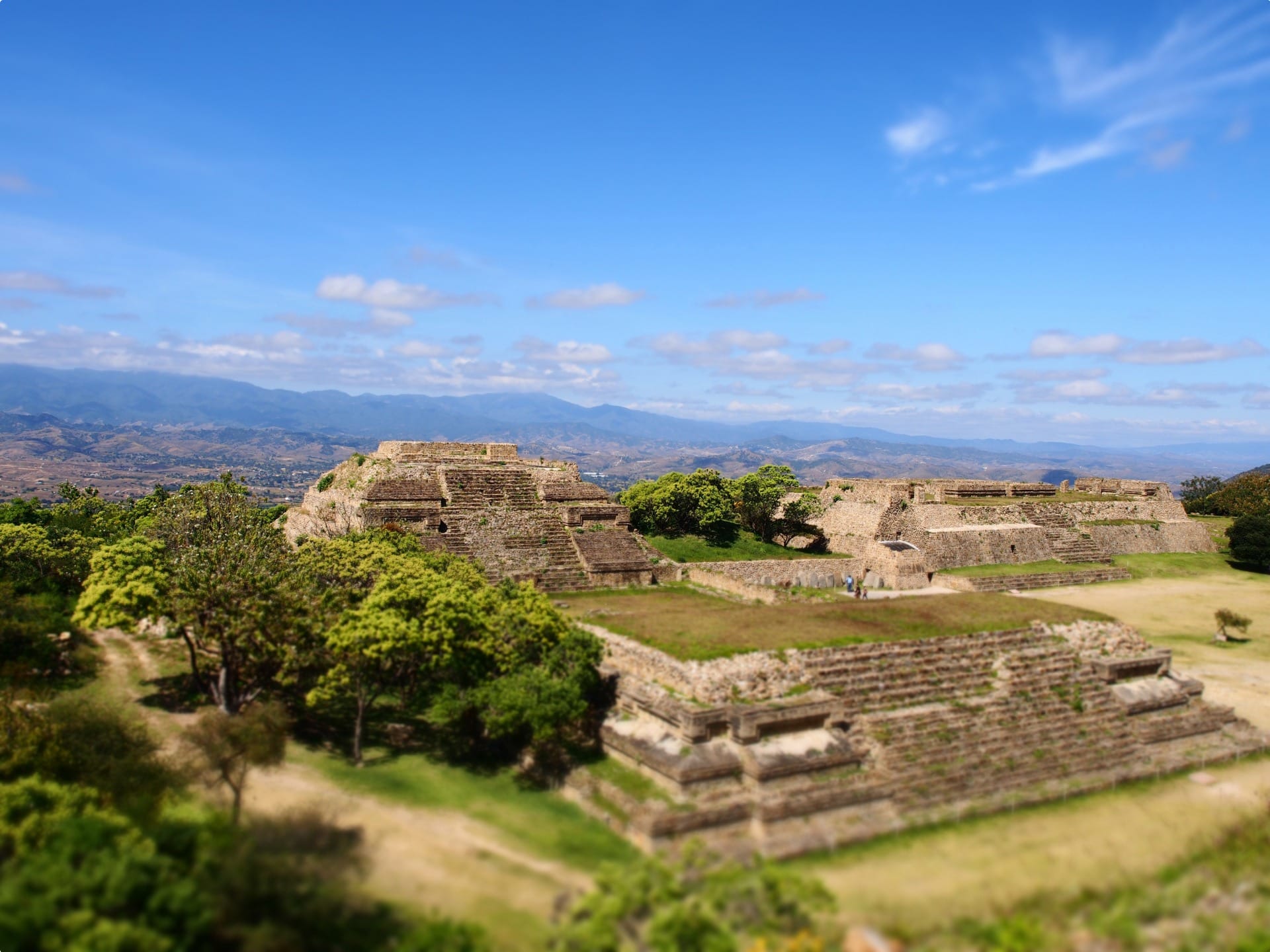
A grand podium was also a perfect design solution for housing all the functions of an opera house, not just atop but also within it: dressing-rooms, rehearsal rooms, parking spaces and loading docks, and of course, the two multipurpose theatres. In order to fit the required two theatres into the designated space, he had to ignore the competition rules stipulating they be placed end to end. Instead, he placed them side by side, facing the water proudly.
Natural Features & Ancient Roofs
To cover everything, Utzon concluded there must be a ‘light’ sculptural roof, emphasising the heavy mass of the plateau below. Above the study and resolute plateau, with horizontal lines that mirror the earth beneath, he envisioned floating roofs as bright and weightless as the clouds. He also realised that the peninsula popping out in a harbour would mean that it would be looked upon from all sides, including even from above. Thus, to go with the usual four facades of each side of a building, he wanted to add a spectacular fifth façade, with each angle offering the viewer something magnificent. The forms of the roofs would be like a sculpture that could be seen from all sides.
For this, Utzon drew from several inspirations. He started by looking at clouds, inspired by their lack of vertical lines. He would endlessly doodle curving clouds, floating weightlessly above the harbour, as well as cloud-like depictions of the curved, floating roofs of ancient Chinese architecture. He also looked at Kronborg castle and at Gothic churches, which have forms that are all different angles against a horizontal line like the sea or the clouds.
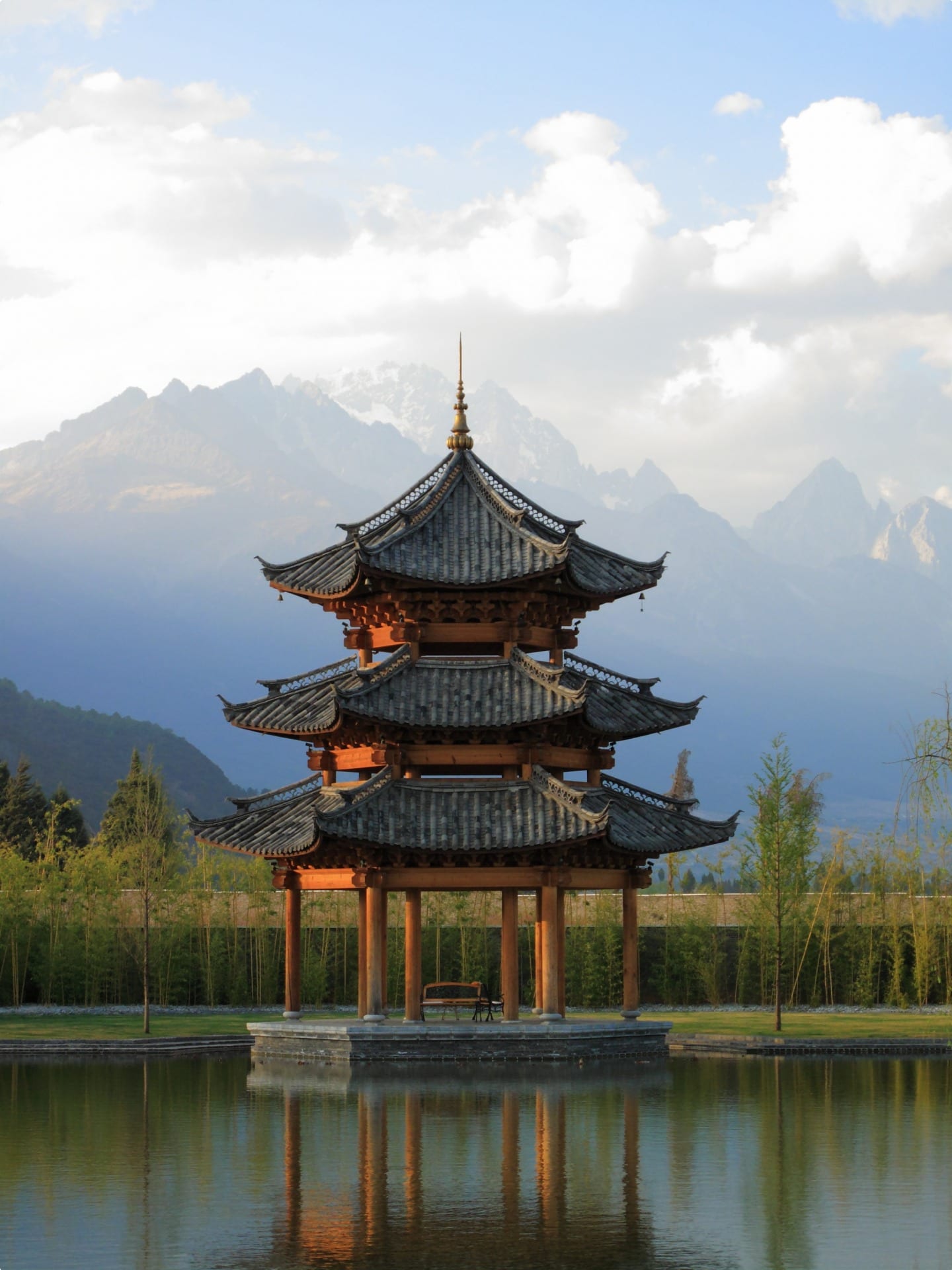
Taking further inspiration from the geometric spirals of seashells, he eventually formulated the iconic curved, white roof of the Opera House. These beautifully curved concrete shells, like billowing sails of ships, would float above weightless and shimmering on Bennelong Point.
Their colour was obvious. “Sydney is a dark harbour,” he later explained. “The colours on the waterfront are dull and homes red brick. There is no white to take the sun and make it dazzle the eyes. Not like the Mediterranean or South America and other sunlit countries. So, I had white in mind.”
Further inspiration came from the stunning, curved mosque roofs in Morocco and Persia. These have shimmered brightly in the sun for centuries, courtesy of ancient ceramic tiles so superbly crafted that they maintain their fine textures and brilliant colours all those years since being fired in the kiln. So, too, the Sydney Opera House would be covered in finely crafted ceramic tiles.
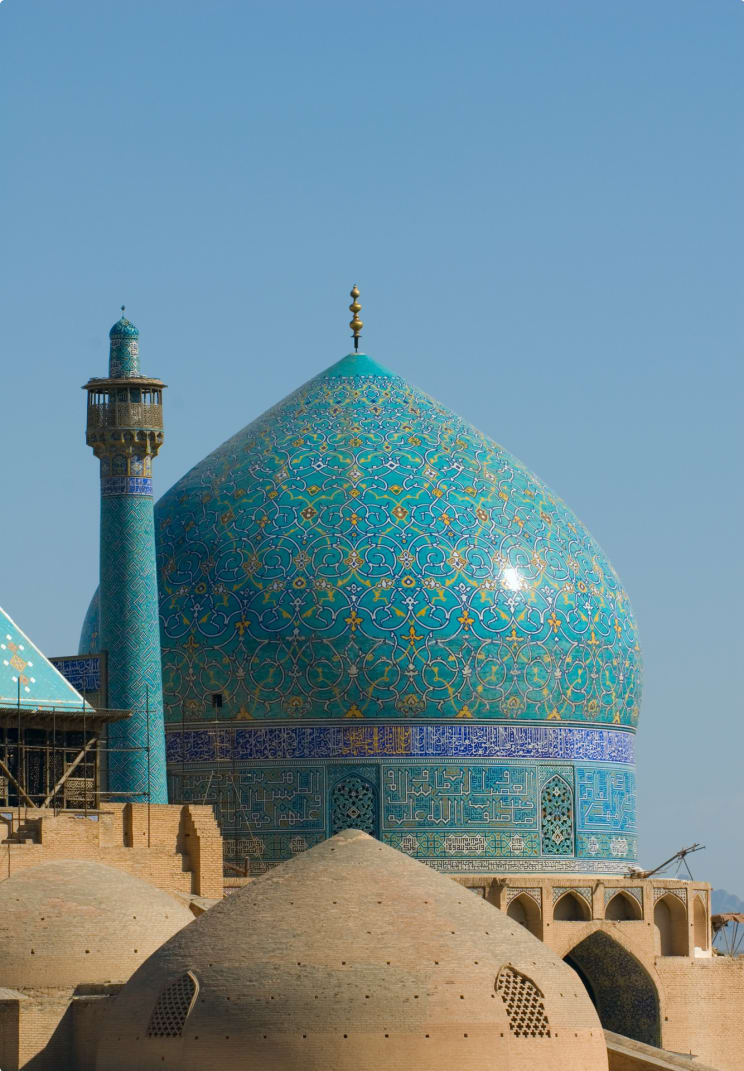
Criticisms & Appraisals
Utzon’s radical design for the Opera House stirred controversy from the get-go, splitting public and professional opinion. The local press attacked it constantly. Headline writers gave the now familiar white shell roofs nicknames such as “the concrete camel”, “copulating terrapins”, and “the hunchback of Bennelong Point”. Some members of the public were reportedly startled by the original roof, one describing the design as a “piece of Danish pastry”.
Conservative local architects, meanwhile, objected to it as fanciful, one describing it as “messy”. The president of the influential NSW Town Planning Association, architect Bertram W. Ford, said the design is nothing less than “insane, and would completely disfigure the point”. Meanwhile, the prominent Australian architect and urban planner, Walter Bunning, described it as “an insect with a shell on its back which has crawled out from under a log”.
From further afield, the doyen of American architecture, 89-year-old Frank Lloyd Wright, a major influence on Utzon, was equally forthright: “This circus tent is not architecture.” Functionalist modernists hated the building. When Utzon went to visit Ludwig Mies van der Rohe in America, the architect of the Lake Shore Drive apartments and the Seagram Building refused to see him.
Other criticisms were levied at the project itself, the site the government had chosen, the wisdom of building an opera house at all, and the expense of the project. Members of Cahill’s Labor Party felt unhappy about the expenditure in light of a crisis in school building and a shortage of 150,000 homes. It was not until 4 July 1958 that the Labor Caucus agreed to go ahead with the project after Cahill assured them that the Government would contribute no more than A£l00,000. The rest was paid by a State Lottery.
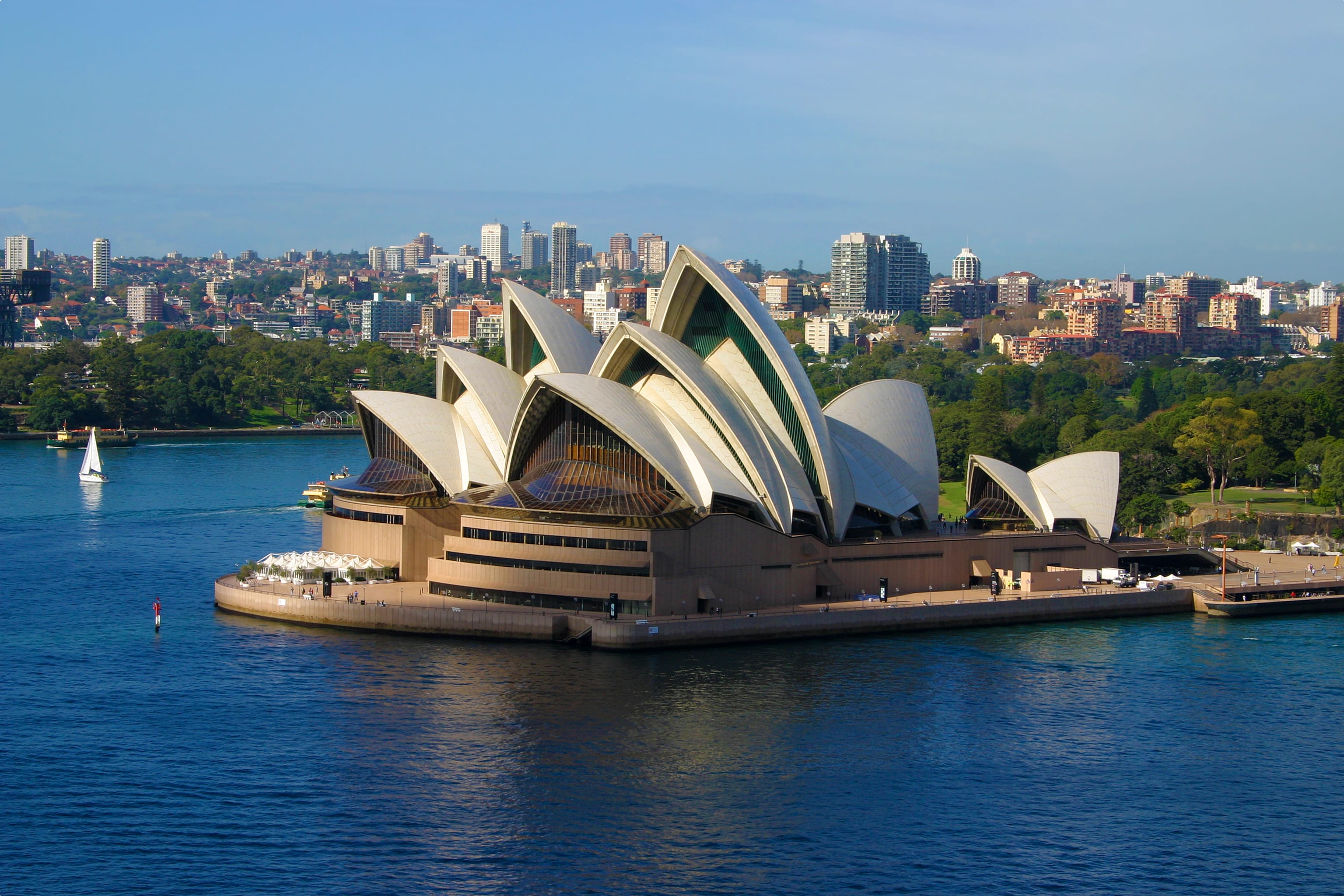
But, by and large, opinion came out on Utzon’s side. Architecture students and leading younger architects were enthralled by it. It was seen as the grand leap of imagination that Australia badly needed but had not yet made.
Local architect Harry Seidler, for example, wrote to the Sydney Morning Herald in 1957 to show his support:
“Architecture is a language and architects speak it. Most of them just barely manage to speak—very few ever speak eloquent prose, but it happens rarely indeed that any of them create poetry with just a few words. Our proposed Opera House is just such poetry, spoken with exquisite economy of words. But then how many of us appreciate or even understand poetry when we have only ever heard crude language.”
Even the second-place winners of the Opera House competition – a group from Philadelphia who had designed a Nautilus shell-inspired building – conceded with grace when they saw Utzon’s design. ‘We almost won, but we didn’t,” one of the architects, Robert Geddes, would say. “Why? Because Jørn Utzon’s design was a masterpiece.”
Today, the controversy around Utzon’s building has subsided and it is widely recognised for the genius that it is. Whether flocking to the Opera Theatre for a Sydney symphony orchestra show or enjoying a cold one at the Opera Bar, it is widely loved by locals and tourists.
Tour From Sydney
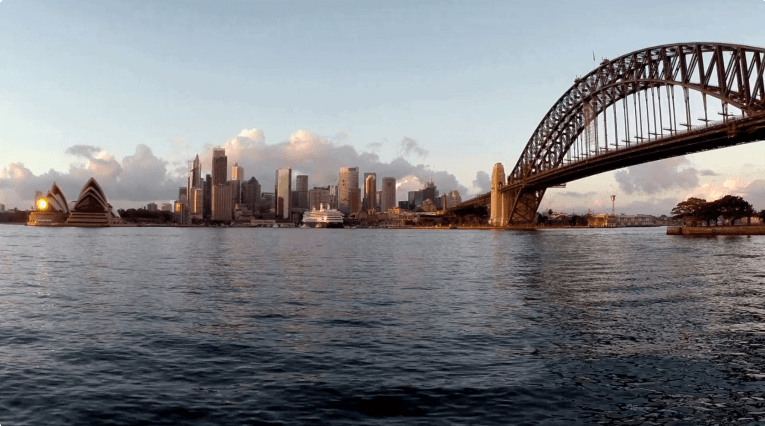
Odyssey Traveller is now offering a new tour departing from Sydney. In our tour to the Southern Highlands of NSW, we seek to go beyond the beautiful beaches and major tourist attractions often listed as places to visit in NSW, such the Hunter Valley, Coffs Harbour, Darling harbour, Byron bay or Bondi. This is a small group tour that will take you out of Sydney and away from the beach culture to see the Blue Mountains and the hidden gem landscapes in between as a day trip collection to some important cultural and natural attractions in the beautiful Southern highlands of regional New South Wales including historic Berrima, Kangaroo Valley, Bowral and the Blue Mountains.
Odyssey Traveller has been serving global travellers since 1983 with educational tours of the history, culture, and architecture of our destinations designed for mature and senior travellers. We specialise in offering small group tours partnering with a local tour guide at each destination to provide a relaxed and comfortable pace and atmosphere that sets us apart from larger tour groups. Tours consist of small groups of between 6 and 12 people and are cost inclusive of all entrances, tipping and majority of meals. For more information, click here, and head to this page to make a booking.

Articles about New South Wales published by Odyssey Traveller:
- Why did the British Settle Australia?
- The Rocks, Sydney
- Broken Hill
- Dubbo
- Bourke
- Lightning Ridge
- The Murray River
External articles to assist you on your visit to the Sydney Opera House and city
Related Tours

7 days
Nov, Feb, Mar, Apr, Sep +1Small group tour to Southern Highlands and Canberra
Visiting Australian Capital Territory, New South Wales
Explore and learn on an escorted small group tour of key places to visit in NSW including the Southern Highlands and Canberra. Program for mature and senior travellers limited to 12 people for couples and solo travellers.
From A$3,750 AUD
View Tour
days
Nov, Mar, May, Jul, Sep +2Escorted small group tour North East New South Wales
Visiting New South Wales
Small group tour exploring the the North East region of New South Wales for mature and senior travellers. Travel, learn and explore about New England's history, the coast, National parks and regional towns in a time capsule surrounding Mudgee.
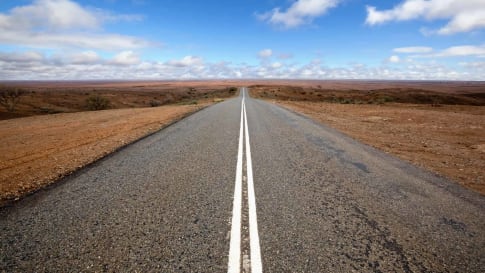
14 days
Apr, Jun, SepEscorted small group tour of New South Wales and Victoria
Visiting New South Wales, Victoria
Discover the Brewarrina fish traps, the World Heritage Site of Mungo man and lady stopping in Mungo National Park and other significant locations such as Broken Hill. Then continue through the Victorian goldfields as well as Mildura and Canberra. A small group tour for senior couples and mature solo travellers to the edge of Outback Australia.
From A$10,615 AUD
View Tour
14 days
Mar, May, Jun, Jul, Aug +3Escorted small group tour of Western New South Wales
Visiting New South Wales
Discover the the Brewarrina fish traps, Aboriginal art at Mt Grenfell and visit the opal fields of White Cliffs. This small group also visits the World Heritage Site of Mungo man and lady stopping in Mungo National Park and other significant locations such as Broken Hill.
From A$9,250 AUD
View Tour
days
Mar, Apr, Jun, Jul, Sep +1Guided small group Motorcycle tours of Western New South Wales
Visiting New South Wales
Motorcycle tours of Western New South Wales. Discover the the Brewarrina fish traps, Aboriginal art at Mt Garrett, learn about the opals of White Cliffs. This small group also visits the World Heritage Site of Mungo man and lady stopping in Mungo National Park and other significant locations such as Broken Hill.
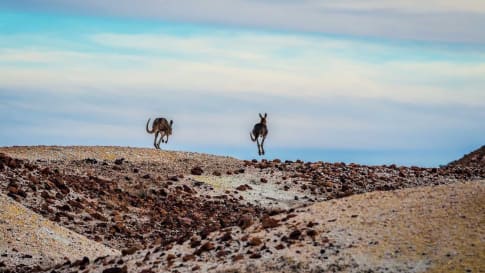
13 days
Mar, OctSmall group tour; Broken Hill and back
Visiting New South Wales, Queensland
Small group tour of New South Wales, Queensland & South Australia deserts, from Broken Hill. Learn about the history of the people who explored the deserts, from indigenous communities to Europeans, as well as Burke and Wills, visit White Cliffs, Birdsville, Maree.
From A$11,550 AUD
View Tour
days
Feb, Apr, May, Jun, Jul +3Small group Motorcycle tours; Broken Hill and back
Visiting New South Wales
Small group tour of New South Wales, Queensland & South Australia deserts, from Broken Hill. Learn about the history of the people who explored the deserts, from indigenous communities to Europeans, as well as Burke and Wills, visit White Cliffs, Birdsville, Marree. Explore the outback by motorbike limited to 8 riders.
Related Articles

Ancient Aboriginal trade routes of Australia
Ancient Aboriginal trade routes of Australia Trade was a central part of life for Aboriginal people prior to the British settlement of Australia. Trading routes criss-crossed the nation, dispersing goods, information, technologies and culture thousands…
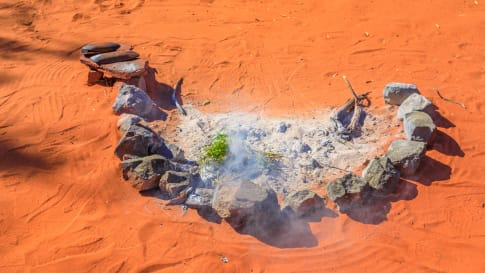
Australian Aboriginal Paths of Migration
Article for small group tours of mature or senior couples or solo travellers interested in learning more about Aboriginal history, Kinship, trading routes, songlines and ancient history.
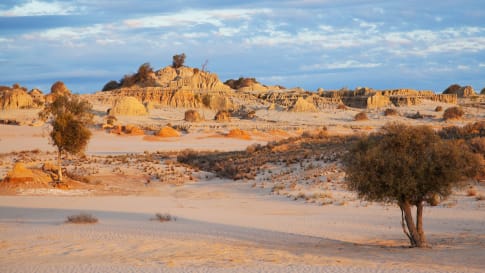
Mungo Man and Mungo Lady, New South Wales
Part of a small group tour of World heritage sites on Victoria, NSW & South Australia for mature and senior travellers. Learn and explore in the Mungo National park about Aboriginal settlement and the fauna and flora of this National park.

Norman Tindale
An Antipodean travel company serving World Travellers since 1983 with small group educational tours for senior couples and mature solo travellers. Tours are supported by a collection of articles to inform and extend the travellers knowledge of Aboriginal culture and history. This article supports an understanding of kinship systems.

The Hawkesbury River
Explore the history of the Hawkesbury River, with its charming historic towns, natural beauty, and rich Aboriginal heritage, all just an hour outside of Sydney. Odyssey offers small group tours for mature and senior travellers, couples, and solo travelers to Australia and New South Wales.
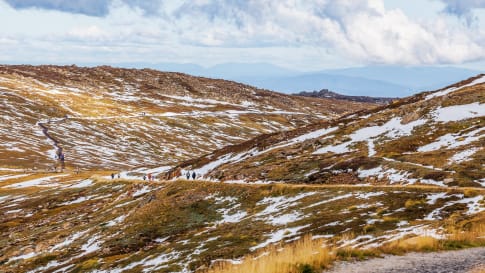
The Bundian Way, New South Wales
small group tours of senior couples and mature solo travellers interested in exploring and learning about the deep Aboriginal history of Australia and the outback. The Bundian way continues the stories of learning.

Uncovering the ancient history of Aboriginal Australia
For small group escorted tours of Australia in Queensland, Victoria, New South Wales, South Australia, Tasmania, Western Australia and the Northern Territory a guide on Aboriginal culture for mature and senior travellers.


